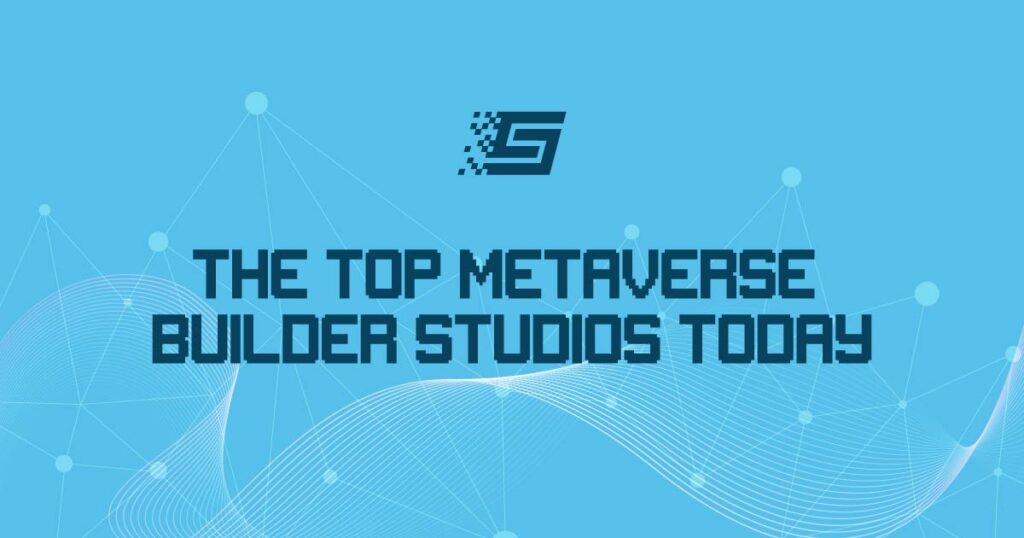The Future Of Work In The Metaverse Part 2
Remote work can be quite stressful. Statistics from Nuffield Health research shows that nearly a third of remote workers in the UK have experienced difficulties in separating their home and work life. More than a quarter of them reported finding it hard to switch off after their working day finishes. So how can the future of work change these pain points?
Virtual workplaces can provide better differentiation between home and work life. Metaverse platforms recreate the sensation of visiting a particular workplace each day. Some virtual reality platforms enable employees and organizations to build their own workspaces, taking on many different forms.
Through the use of your personalized digital avatar, you can communicate your status conveniently (i.e. “at lunch”). Furthermore, you can easily stay connected to colleagues without feeling chained to the computer or phone. These frequent sources of stress that traditional remote work situations cause can hamper productivity in a big way.
The increase in teamwork and ease of communication will certainly end up as key drivers of the virtual workplace.
Faster Learning In The Metaverse
The metaverse could revolutionize future work training and skills development by reducing the time needed to develop and acquire new skills.
With AI-enabled digital coaches on-hand to assist in employee training and with career advice, great potential exists for advancements in every area of the workforce.
Every object could be made to be interactive. A training manual, machine, or product, for example, could provide 3D displays and step-by-step instructions, and “how-to” guides.
Virtual reality role-play exercises and simulations will enable worker avatars to learn in different highly-realistic scenarios. This includes difficult situations in the world of work such as high-pressure sales presentations, the challenge of dealing with difficult clients, or having tough conversations with colleagues or employees.
Examples Of Virtual-World Learning
The virtual-reality technologies that have already been used to accelerate skills development include Microsoft’s HoloLens technology. The surgical tech company Medivis uses the tech to train medical students by interacting with 3D anatomy models.
Embodied Labs use 360-degree video to help medical students and professionals in their work with Alzheimer’s Disease. They can experience what it is actually like to have the illness. The tech also lets people experience the effects of age-related audiovisual impairments. This assists in making correct diagnoses and could help us gain a better understanding of different illnesses.
Manufacturing giant Bosch together with Ford Motor Company, has pioneered a VR-training tool. Using the Oculus Quest headset, they can train technicians on electric vehicle maintenance more effectively.
Metaverse learning was trialed by the UK Skills Partnership to some success. They created a series of nine AR (augmented reality) training models for front-line nurses. Using 3D animation and augmented reality, tests of learners’ skills in specific scenarios helped them reinforce best practices in nursing care.
With its deep roots in online gaming, the metaverse can tap the potential of gamified learning tech for easier and faster acquisition of new skills. The game can become the learning activity. Gamified technologies have been used to train lab technicians.
PixelMax is working on games for the first responder community in the UK, for example, the police, firefighters, medical crew, etc. They combine physical training and immersive gamification, enabling first responders to do repeat training, try different strategies, review the different outcomes, and look at different ways of working better as a team.
Virtual-World Learning Benefits
Research into virtual-world training shows it can offer important advantages over traditional instructor/classroom-based training. It allows for a greater scope of visually demonstrating concepts and work practices. Also, it can provide a greater opportunity for “learning by doing.” It gives higher engagement overall through techniques that allow the feeling of immersion and such things as problem-solving using “quest-based” methods.
Virtual-world learning can make use of virtual agents – AI-powered bots. They could assist learners when they get stuck, provide nudges, and set scaled challenges for them. (For further reading on this, refer to our recent blog post on the topic on the future of work)
The visual and interactive nature of metaverse-based learning is likely to appeal to autistic people and people who respond better to visual as opposed to verbal cues in general.
Virtual reality tools can also be used for combating social anxiety in various work situations. For example, by creating realistic but safe spaces to practice public presentations and meeting interactions, people could overcome this issue quickly.
New Roles In The Metaverse Economy
The internet didn’t just bring new ways of working. It also brought a whole new digital economy. New enterprises, new jobs, and new roles have begun to emerge as the metaverse takes shape and its immersive 3D economy gathers momentum.
IMVU is an avatar-based social network with more than 7 million users per month. Thousands of creators make and sell their own virtual products for the metaverse on their platform. It currently generates a whopping $7 million in revenue per month. These items include designer outfits, furniture, make-up, music, stickers, pets, and more.
Alongside the creators, the “meshers” – developers who design the basic 3D templates for others to customize – can also earn significant income for their work. A successful mesh can be replicated and sold thousands of times, tailored as personalized virtual products by each individual buyer.
Decentraland and other metaverse platforms like The Sandbox are creating virtual realtors, enabling users to buy, sell, and build businesses upon parcels of virtual land. Trading is done with digital money in the form of cryptocurrencies. Each platform will have its preferred token that payments will be made in. Decentraland uses MANA, their native token, and similarly, The Sandbox uses its native token, SAND.
Challenges And Imperatives
Portability Of Skills
Will experience or credentials gained in one virtual world or enterprise be relevant in another, or in real-world life? Employers, educators, and training institutions will have to create more liquid skills by agreeing upon properly certified standards with appropriate accreditation of training providers. This will help in avoiding quality dilution. It also provides assurance to workers and employers that experience and qualifications can transfer across a range of platforms in the future of work.
Being Truly Hybrid
The rush to remote work during the pandemic showed that many enterprises couldn’t satisfy the necessary requirements for adoption of truly digital ways of working. Outdated policies, a lack of infrastructure, and a strict demarcation between consumer and business technologies acted as stumbling blocks.
Fully integrated working models that allow employees to move seamlessly between physical, online, and 3D virtual working styles need development using consumer technologies that are native to the metaverse. These include avatars, gaming consoles, VR headsets, and hand-track controllers. Haptics and motion control will help to map the user’s position in the real world into the virtual world.
Some companies are developing virtual locomotion technologies. This includes leg attachments and treadmills to create realistic walking experiences. Also, ECG electrodes can decode neural signals, letting users control objects with their minds.
Keeping The Future Of Work Open And Decentralized
The metaverse has emerged in an open, decentralized manner so far. Spurred on by millions of developers, gamers, designers, and investors, it eliminates the intermediary companies. As we have seen in the social media sphere, there is a danger the metaverse could become quickly dominated by major technology organizations. This would naturally result in reduced choice and would lessen the potential for grass-roots innovation.
To harness the full power of this democratized movement, enterprises need to pursue open-source standards and the development of software that allows for “interoperability” within the metaverse – seamless connections between different virtual worlds.
The speed of adoption will be important. Most of the technology and infrastructure is already in place. But the metaverse will only be successful if deployed as a tool for employee engagement and experiences, not for supervision and control.


